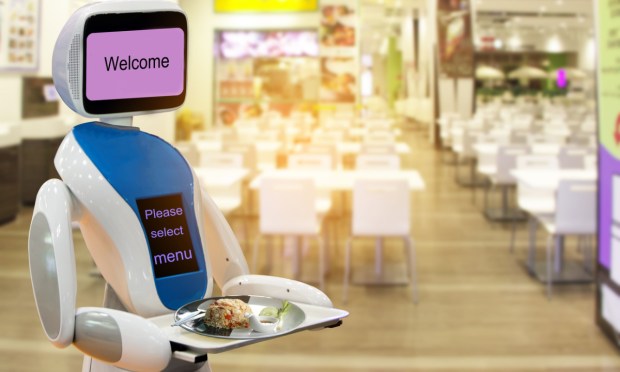From Front Counters to Kitchens, AI Takes Over Restaurant Industry

As restaurants face labor challenges both in the front of the house and the back, many are tapping robotics and artificial intelligence (AI) to boost their ability to meet demand.
Fast-casual chain Sweetgreen, for one, is automating the makeline with its “Infinite Kitchens,” while Chipotle founder and former CEO Steve Ells is reportedly getting into the robotic restaurant space, and quick-service restaurants (QSRs) including Wendy’s and Del Taco are automating the drive-thru order-taking experience with conversational AI.
In a conversation with PYMNTS’ Karen Webster, Krishna Gupta, interim CEO of drive-thru automation tech provider Presto, said voice AI in the drive-thru arena “is evolving quickly” and in so doing, offering restaurant chains beset by labor shortages and classic drive-thru snags a better way to work.
“With OpenAI … and large language models in particular, our job is to integrate that into our existing product workflow and make things faster, more personalized, and provide capabilities that frankly weren’t there before,” Gupta said. “All those things matter in the drive-thru.”
A study cited in the latest edition of PYMNTS’ “B2B and Digital Payments Tracker®,” a collaboration with American Express, “Inflation Puts Technology on the Menu for Restaurants, revealed that 78% of restaurant operators do not have enough staff to support customer demand.
Moreover, research from PYMNTS’ Restaurant Readiness Index, which draws from a survey of more than 500 restaurant managers, reveals that about one in three eateries has decreased its level of service as a result of staffing shortages.
Plus, consumers are somewhat open to automation, and may even seek it out when the alternative is poor service. Additional research cited in the “B2B and Digital Payments Tracker®,” reveals that 73% of consumers prefer automation over interacting with staff members in at least one area of a business.
Still, not all tests of automated technologies have proven successful. For instance, last summer, casual dining giant Brinker International said it was pausing its test of Bear Robotics’ robotic server technology, but other restaurant brands continue to believe in the robo-waiter model.
For example, the Indianapolis Star recently reported that, at full-service restaurant (FSR) chain Tian Fu Asian Bistro, is trying out robo-servers from China-based technology company Pudu Robotics. Meanwhile, Bear Robotics also continues to roll out its Servi robots, recently announcing its expansion to restaurants in Florida and Washington State.
Certainly, at least some consumers are open to increased automation even in customer-facing roles. Take, for instance, Jamba. In an interview with PYMNTS earlier this year, Geoff Henry, then president of the smoothie and juice brand, spoke to the progress of the restaurant’s partnership with autonomous robotic food service kiosk creator Blendid to create automated smoothie shops, highlighting positive responses from consumers who have tried it, especially among younger consumers who are more open to trying out new technologies.
“The repeat rate has been very high,” Henry said. “We’re obviously tracking those who purchase and then come back and purchase again [and] benchmarking that relative to what we would expect versus industry standards, and we’ve been pleased.”

